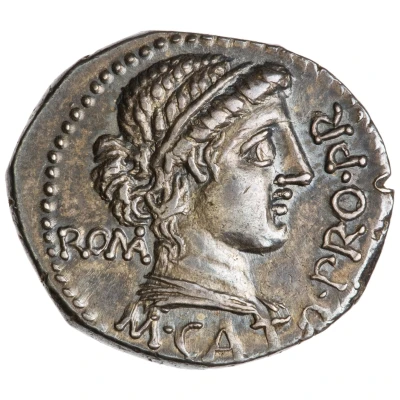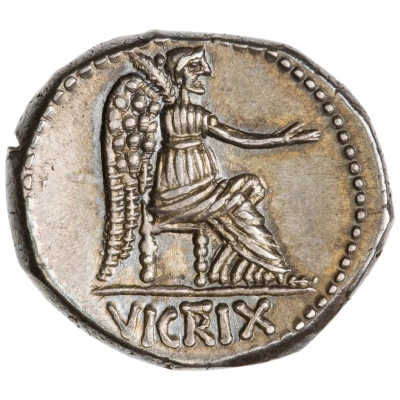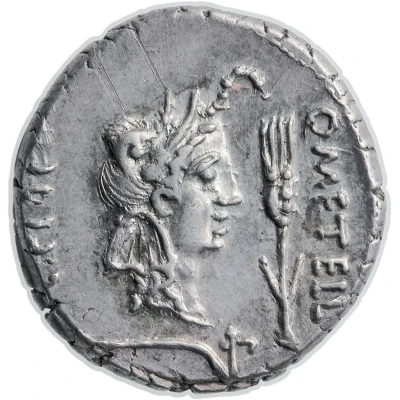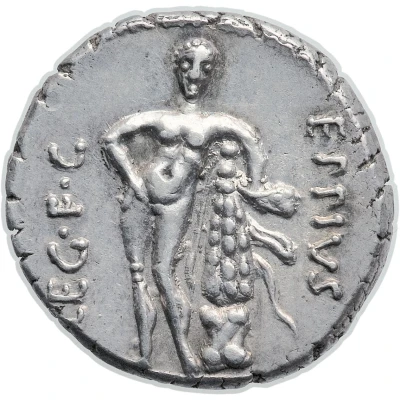


© American Numismatic Society (ANS)
Denarius Porcia: Cato Uticensis; ROMA M•CATO•PRO•PR / VICTRIX 47 BC - 46 BC
| Silver (.950) | 3.73 g | 18 mm |
| Issuer | Rome › Roman Republic (509 BC - 27 BC) |
|---|---|
| Period | Republic (509 BC - 27 BC) |
| Type | Standard circulation coin |
| Years | 47 BC - 46 BC |
| Value | Denarius (1) |
| Currency | Denarius of 16 Asses (141 – 27 BC) |
| Composition | Silver (.950) |
| Weight | 3.73 g |
| Diameter | 18 mm |
| Shape | Round (irregular) |
| Technique | Hammered |
| Orientation | Variable alignment ↺ |
| Demonetized | Yes |
| Updated | 2024-10-06 |
| Numista | N#200056 |
|---|---|
| Rarity index | 94% |
Reverse
Victory seated right, holding patera in right hand and palm-branch in left hand, over left shoulder. Border of dots.
Script: Latin
Lettering: VICT͡RIX
Edge
Rough
Comment
For this type, Crawford found an estimate of less than thirty right-hand corners and less than thirty-three reverse corners for three varieties. This type appears to be much rarer than reference works suggest. Crawford found only eight examples, from the treasuries of San Giulamo (5), Alvignano (1), Vigatto (1) and Bourgueil (1).Cato d'Utique (95-46 AC.), the descendant of Cato the Elder (234-149 AC.), in the tradition of his great-grandfather, was a republican at heart. He joined Pompey's camp after Caesar crossed the Rubicon. After Pharsalus, he took refuge in Africa at Utica, fortifying it and choosing Scipio, from an illustrious family, over Labienus, the great military commander, as leader of the Pompeian party. When Scipio was defeated at Thapsus, Cato shut himself away in Utica, preferring to commit suicide than fall alive into Caesar's hands. He thus became the model of the republican martyr and the upright Roman, who had declared that he would rather die with the Republic than live one day without it. His wish was granted. The right and reverse sides of this coin find their model in a denarius of Marcus Porcius Cato struck in 89 B.C. at the height of the Social War.
CGB
Interesting fact
The Denarius coin features a portrait of Cato Uticensis, also known as Marcus Porcius Cato, on the obverse (front side), while the reverse (back side) bears the image of Victory standing on a trophy. This coin was minted during a time of political turmoil in Rome, when Cato was a prominent figure in the Roman Senate and a strong opponent of Julius Caesar. Despite Cato's opposition, Caesar's forces ultimately triumphed, and Cato committed suicide in 46 BC, the same year this coin was minted.



